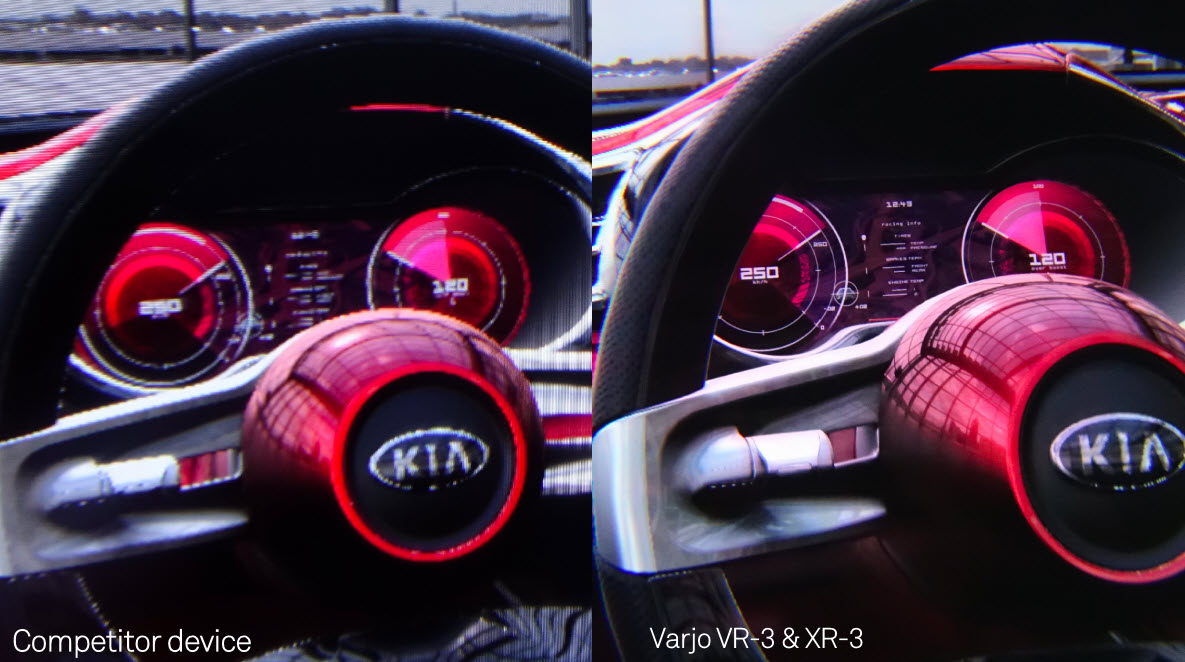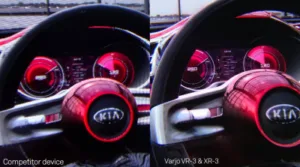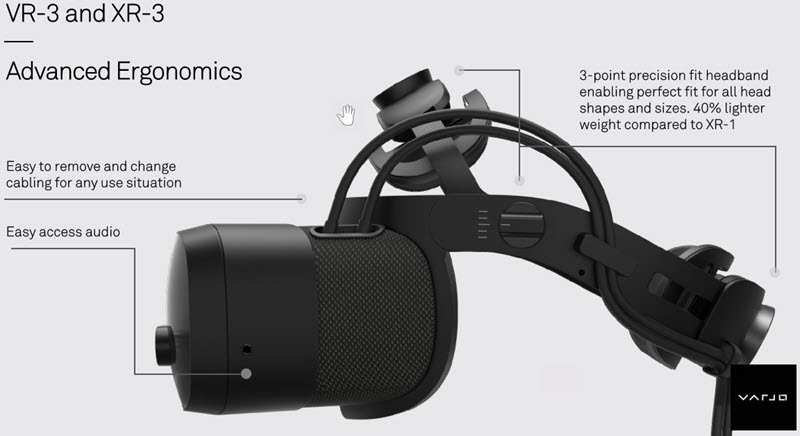I have been following the Finnish mixed reality headset maker, Varjo, for several years and have been impressed and surprised by the company’s products, which have delivered the best mixed reality experiences that I had tried. Now, the company has really moved its headsets on again.
Frustratingly, this time, I have had to take the firm’s word for how good it is as the current lockdown rules have not allowed me to try their latest headset. However, there have been a number of significant changes from what it called a development system, to a genuine product. Despite the development status, (and despite the high price) the previous headset has been widely adopted, the firm said, in automotive (pretty well all of them, but Kia in particular), aviation and many other industries with ‘hundreds’ of customers including dozens of universities.
Now the company has pushed on in terms of the visual performance, but at the same time has added new depth tracking, reduced the weight and improved comfort of the headset and has, at the same time, dramatically reduced the price. Let’s look at the new headset features in that order.
High Resolution First
The big promise of the Varjo concept was high resolution – with very high resolution in the centre of the display where it is really needed, while the wider image has lower resolution. The 3rd generation product moves the resolution up from 62 pixels per degree for the centre, with 14ppd for the rest, to 71ppd. PPD is a really good way of judging visual resolution as it gets away from issues of viewing distances. 20/20 vision (which is average vision, not perfect vision!) corresponds to 30 cycles (switches from light to dark or vice versa) per degree. To achieve that, you need at least 60 pixels per degree, so that you can say that the acuity at the center is around 20% better than 20/20 vision. (That’s a gross simplification, but you get the picture!)
Further, the firm has doubled the area that has very high resolution and which uses a microOLED that is 10X brighter than the previous generation. It has also boosted the overall Field of View (FoV) to be 40% wider on the LCD that is used as the outer display at 115 degrees. The 12 megapixel custom LCD has a proprietary rolling backlight based on a miniLED backlight. The backlight is driven in conjunction with the display refresh to give the smoothest operation. The frame rate is the same as the previous version, but the persistence is said to be the same for both displays.
 Varjo gave us this comparison of resolution
Varjo gave us this comparison of resolution
Early on in the development of the headset, the integration of the central display was quite good, but the two areas were very obvious. The second generation got the images much better matched, but there was a visible switch from one to the other. Varjo told us that it has done even better now and there is no visible seam. Part of that has been pixel-level colour grading for both displays, which helps to match them. The displays are calibrated to cover 99% of sRGB, which is good enough for many applications. The coverage is 93% of DCI-P3.
For many applications, the key area for detail is actually on the lower part of the image (e.g. for teaching of flying by instrument), so Varjo has moved the focal point of the display down somewhat. The firm uses its own gaze technology which runs at 200Hz and automatically calculates IPD for optimum comfort and performance. The eye tracking is said to be fast and accurate enough to be used for diagnostic purposes and, like the HP headset I wrote about a few weeks ago, the system can track pupil size, which can be very helpful in understanding how the user is reacting to the environment. The eyebox can also be adjusted. The headset uses custom lenses with no reflections or fresnel artefacts. The resolution of the lens is variable to match the eye’s performance.
Two Versions
There are two versions of the headset. One is for VR only and does not have the front cameras, and a mixed reality version with dual cameras. The XR-3 version is for mixed reality and has Varjo’s inside out tracking which has improved and the firm also supports Steam tracking. The headset has newly-added LIDAR hardware that works up to 5 metres with ‘pixel accuracy’. It also has the latest (V5.0) Ultraleap technology for hand tracking.
I was already very impressed with the mixed reality performance from Varjo when I saw it at AWE Expo a couple of years ago (Varjo Mixed Reality Demo is Impressive), and at a demo in London last year (Varjo Impresses with Mixed Reality). Varjo has previously explained that it has really worked hard to minimise the latency from camera to eye to make capture as good as possible. There is some processing to compensate for the fact that the cameras are not in the same focal plane as the viewer’s eyes, but that work is not yet finished. “We’re halfway there” on that topic.
The cables are lighter and dual USB cables are now enough to connect, with short cables possible for use with VR backpacks (it needs a ‘gaming level’ PC to drive the headset). Two DisplayPort lanes are used along with DisplayStream Compression at a 1:3 ratio. The headset is 40% lighter than the last version. Early on in the pandemic, the design brief was modified to ensure that the headsets can be completely and easily cleaned. The design uses a counterweight to reduce pressure on the cheeks of the user and a lot of work has gone into optimising the shape of the headband to suit different heads.
The VR-3 will cost $3,195 and the XR-3 is priced at $5495 and subscriptions are needed for support. Orders will be placeable from early December with shipping in around 8-12 weeks.
Although Varjo didn’t mention it on our call (it had been quite a long one!), we reported previously that the firm is now working with Lenovo as a reseller. That should ensure widespread access to key customers. (BR)



